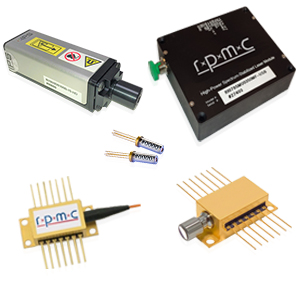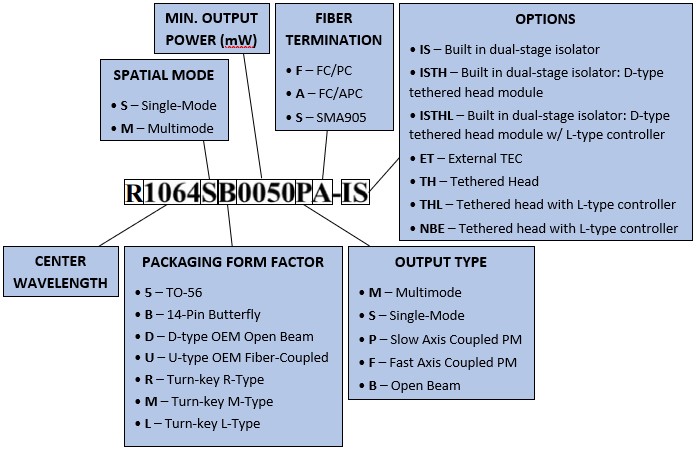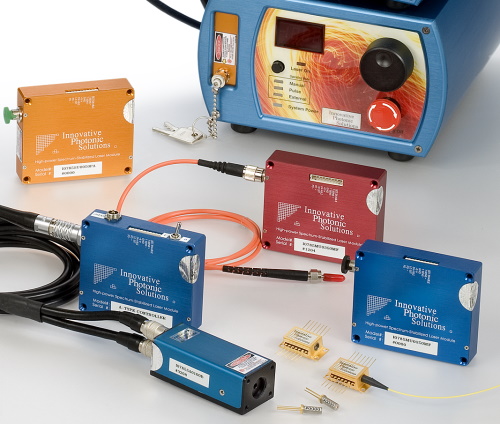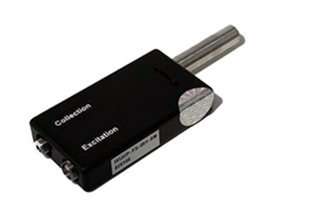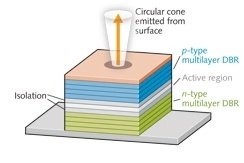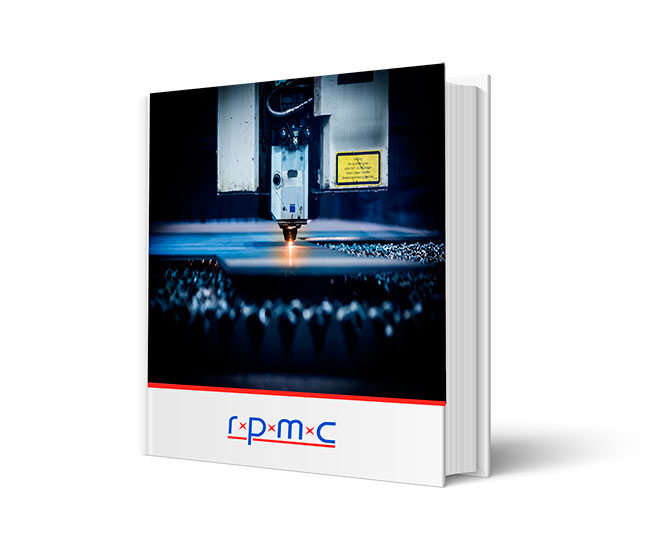R0860
Laser Diode, Stabilized, 860nm
Key Features:
Free Space:
- High Power Single Frequency Output
- Narrow Spectral Linewidth
- Stabilized Output Spectrum (< 0.007 nm/0C)
- Gaussian TEM00 Spatial Mode
- Circularized & Collimated Output Beam
- Integral ESD Protection & Thermistor
- Integral Laser Line Filter
- SMSR 70 dB w/ laser line filter (40 dB without)
Fiber Coupled:
- High Power Single Mode (single spatial & SLM) Output
- Ultra-Narrow Spectral Bandwidth
- Stabilized Output Spectrum (< 0.007 nm/0C)
- Excellent Beam Quality (M^2 < 1.1)
There are many configurations and options available. If you do not see exactly what you need below, please contact us!
Need Quantities? Have a question?
POPULAR CONFIGURATIONS:
Picture |
Part Number |
Part Description |
Datasheet |
Price |
Lead Time |
|
|---|---|---|---|---|---|---|
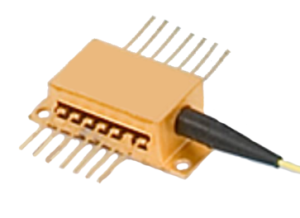
|
R0860MB0350MF |
Multimode Laser Diode, 860nm, 350mW, 14-pin Butterfly Package, Fiber Coupled w/ FC/PC Connector |
|
Inquire |
Get Quote | |

|
R0860MB0350MS |
Multimode Laser Diode, 860nm, 350mW, 14-pin Butterfly Package, Fiber Coupled w/ SMA Connector |
|
Inquire |
Get Quote | |

|
R0860MB0600MF |
Multimode Laser Diode, 860nm, 600mW, 14-pin Butterfly Package, Fiber Coupled w/ FC/PC Connector |
|
Inquire |
Get Quote | |

|
R0860MB0600MS |
Multimode Laser Diode, 860nm, 600mW, 14-pin Butterfly Package, Fiber Coupled w/ SMA Connector |
|
Inquire |
Get Quote | |
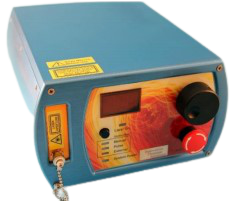
|
R0860MM0350MS-USB |
Multimode M-Type Module, 860nm, 350mW, SMA Connector |
|
Inquire |
Get Quote | |

|
R0860MM0500MS-USB |
Multimode M-Type Module, 860nm, 500mW, SMA Connector |
|
Inquire |
Get Quote | |

|
R0860MM1000MF-USB-DL |
Multimode M-Type Module, 860nm, 1000mW, FC/AP Connector |
|
Inquire |
Get Quote | |

|
R0860MM1000MS-USB-DL |
Multimode M-Type Module, 860nm, 1000mW, SMA Connector |
|
Inquire |
Get Quote | |
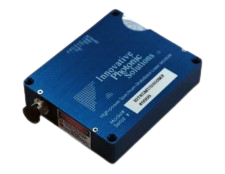
|
R0860MU0350MF-USB |
Multimode U-Type Module, 860nm, 350mW, FC/PC Connector |
|
Inquire |
Get Quote | |

|
R0860MU0350MS-USB |
Multimode U-Type Module, 860nm, 350mW, SMA Connector |
|
Inquire |
Get Quote | |

|
R0860MU0500MF-USB |
Multimode U-Type Module, 860nm, 500mW, FC/PC Connector |
|
Inquire |
Get Quote | |

|
R0860MU0500MS-USB |
Multimode U-Type Module, 860nm, 500mW, SMA Connector |
|
Inquire |
Get Quote |
The R series of wavelength-stabilized single-mode and multimode laser diodes offer narrow linewidth output in wavelengths from 633nm thru 1064nm, with output powers up to 5 W. This highly customizable series offers package options ranging from components as basic as a TO-56 or 14-pin BF packaged diodes to OEM modules, including electronics, to UL/CE and IEC-certified turn-key systems. The R series is the perfect source for various markets, including chemical analysis, bio-medical, fiber laser, and scientific applications.
Benefits:
- Product and technology capabilities and applications:
- Our products and technology have enabled the wide-spread use of these compact narrow-linewidth sources for chemical analysis, bio-medical, fiber laser, and scientific markets
- This series specializes in the integration of semiconductor lasers, high-reliability micro-optic packaging, precision control electronics, and digital control for these applications.
- Features and benefits of the HECL technology:
- With IPS’s HECL technology, single-spatial mode lasers spectral bandwidth reduces to a single-frequency, single longitudinal mode that has an extremely narrow linewidth
- The R-Series offers side mode suppression ratios that provide extremely high signal to noise ratio and exhibit highly stable wavelength versus temperature characteristics which eliminates the need for complex control circuitry
- Customization options and additional offerings:
- The R-Series is highly customizable from free-spaced and fiber-coupled units designed for integration to full turnkey systems
- In addition, IPS offers high-throughput Raman probes for both single and dual laser sources. These probes can be configured for different wavelengths, cut-on wavenumbers, input and output fiber core diameters, and spectrometers.
The R0860 is a set of 860nm wavelength stabilized diode lasers with a wide range of configuration options. Our proprietary wavelength stabilized lasers feature stable (≈ 1% power stability), high output powers with ultra-narrow spectral bandwidths, and a diffraction-limited output beam. Designed to replace expensive DFB, DBR, fiber, and external cavity lasers, our multi-mode spectrum stabilized lasers offer superior wavelength stability over time, temperature (0.007 nm/0C), and vibration, and are manufactured to meet the most demanding wavelength requirements.
The TO-56 & 14-Pin Butterfly packaged, base product lines come standard with a circularized and collimated open output beam, internal thermistor, and ESD protection, while the 14-Pin Butterfly package can also be fiber-coupled (expect ≈ 50% power loss from base values with fiber-coupling). Utilizing a hybrid external-cavity laser design, based on volume Bragg grating (VGB) technology, we ensure extremely narrowband (≈ 100kHz) output, with a precisely defined center wavelength and a very low sensitivity to temperature changes. Lasing wavelength can be accurately specified and repeatedly manufactured to within +/-0.1 nm upon request. The R0860 also provides an excellent side mode suppression ratio (SMSR), which is typically between 35-45 dB.
If you have any questions or need more information, please contact us.
| Wavelength (nm) | |
|---|---|
| Output power (W) | |
| Mode | |
| Output | |
| Linewidth | |
| Coherence length |

 SHIPS TODAY
SHIPS TODAY 